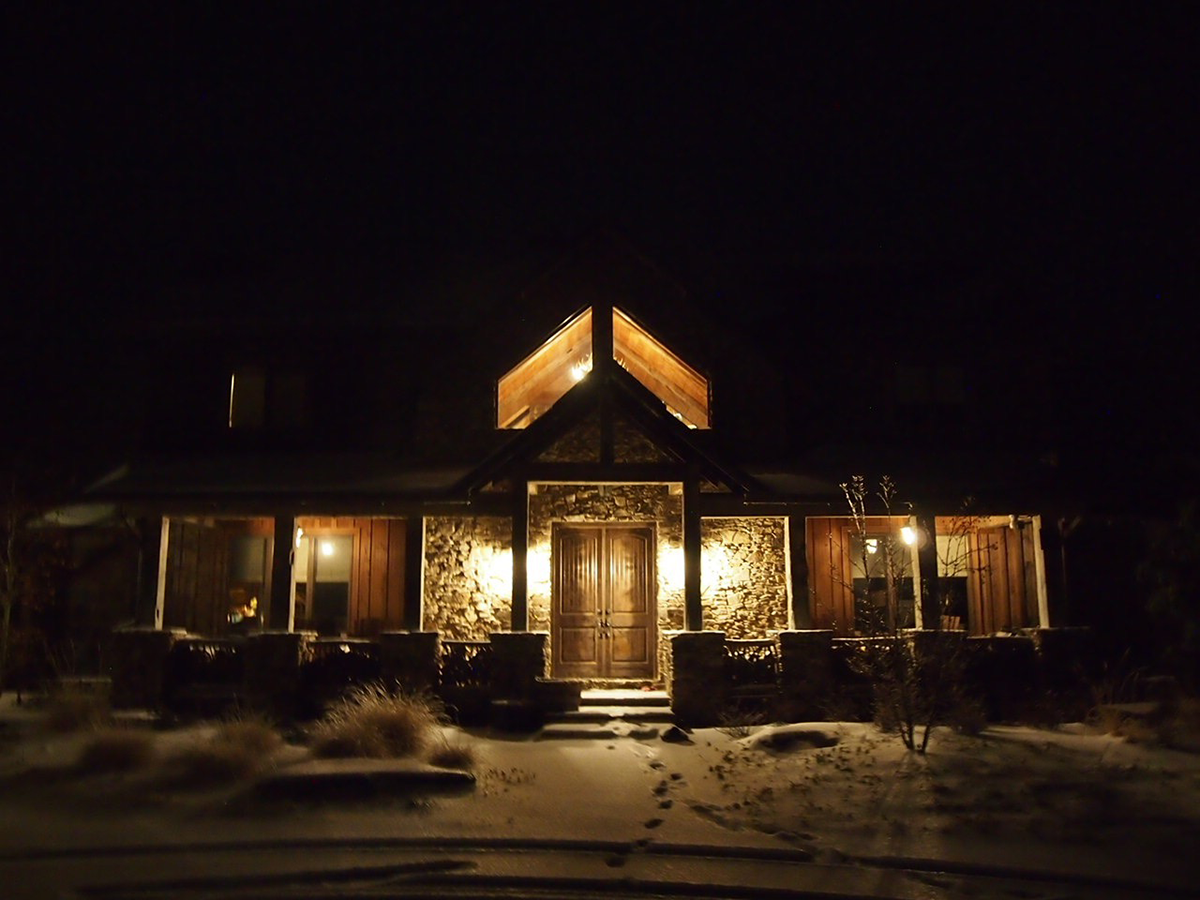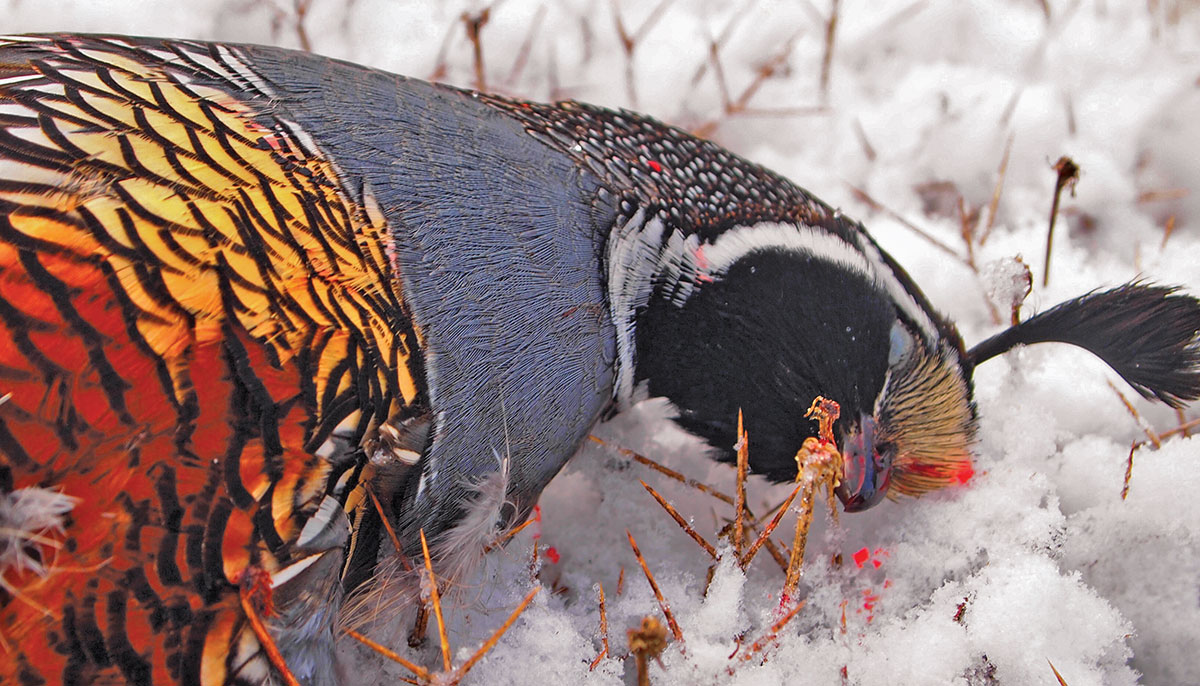The dark figures hunched in single file like elder priests wringing their hands behind them, pondering the trials of heaven and earth. The dozen turkeys strode into the early winter scene below, momentarily harried a monstrous rose bush for its red fruit, then continued uphill toward my hide under a large ponderosa pine.
Less than 15 minutes had passed since I’d scraped away the dusting of snow and pine needles from under the tree for a dry place to sit. I was watching a field about a quarter-mile below the farmhouse, waiting to fill a tag—buck or doe. I was happy to see something up and around to keep my mind off of the cold. The stirring call of geese—Canadas and some snows—cackled and honked as their V-shaped formations crisscrossed the skies.
Clouds had hung heavy and dark when I arrived, but they were already beginning to lighten as a demarcation of blue headed up from the southwest. Sailors may “delight with clear skies at night,” but all I could imagine was that it was going to get much colder. I dug in my pack for a book and my reading glasses. Getting old, like wearing glasses, gets old.
I had read only a page or two when, over the top of those glasses, I noticed some movement under an apple tree below. The tree had had a very productive year and was filled with ripened apples, so I thought the deer would hesitate in search of fallen fruit. Instead, it trained its gaze out onto the farm field. The crop under a blanket of first snows seemed to be its intention for afternoon feeding. Coast perceived clear, the deer—a doe—made its way over an old four-strand barbed-wire fence.
While she disappeared behind a pine tree just below me, I removed my glasses, set down my book, and reached for my pack. The pack’s frame would be needed as a rest for my Winchester Featherweight, chambered in .30-06. I was set and turned the variable scope up to have a better look. The doe wasn’t the yearling that I feared it might be, younger, less cautious deer often the first to arrive. No, she wasn’t terribly small, either.
I had not been shooting my rifle, and I had developed a bad twitch in my trigger pull, due, most likely, to shotgun shooting sports that dominated my fall. At just over 100 yards, the doe stopped for a brief look around. The scope was centered right behind the shoulder as I slapped the trigger’s front face. Prancing, tail held high, up the far slope it went. I had missed!
Confusion turned to curiosity, and the deer leveled off for a look back in the direction of the loud noise. Cursing my shooting beneath frozen breath, I followed the doe in my scope until it halted once more. It was going to be over 200 yards now. Determined to maintain a steady creep, my finger pulled toward my cheek until the hardwood stock jumped against my shoulder.
Zzzippp-Whap! The rifle’s report was followed by the sound of a solid strike. The deer folded right where it stood; no struggle, no movement of any kind.
It is amazing how quieting an eight-inch blanket of snow can be, how quickly the sharp intrusion of a rifle’s blast is pulled into its white cushion and swallowed up, just as quickly replaced by a soft breeze and the chatter of chickadees.
Dusk had turned terribly cold—into the low 20s. Stinging fingers stuck, frozen, to the rifle barrel as I grabbed up my belongings. The drag down to the fence and the long hike back for my ATV was going to be a welcomed act of exercise; anything to keep warm! It would be dark by the time I had returned from the field and even colder after the wintery ATV ride.
Some may question, “You went through all of that for a doe?!” No, of course not. I went through all of that for the experience: the sights, the sounds, the exhilaration of the first dagger-cold day—a prelude for the winter to come. The doe happened to be part of the whole.
Photo: photographer3431/iStock




